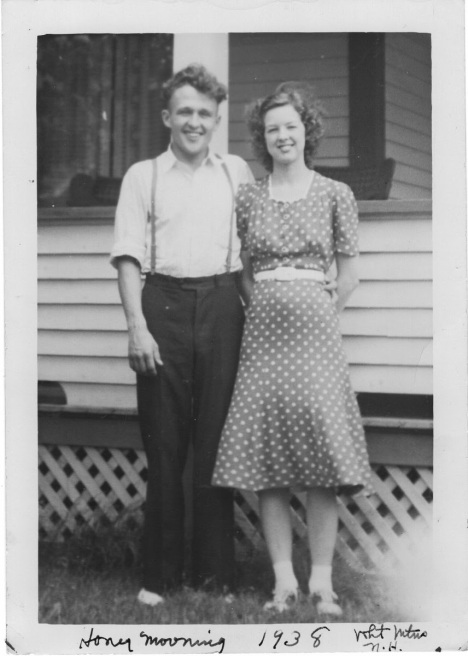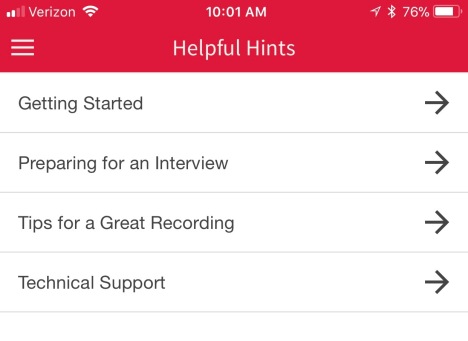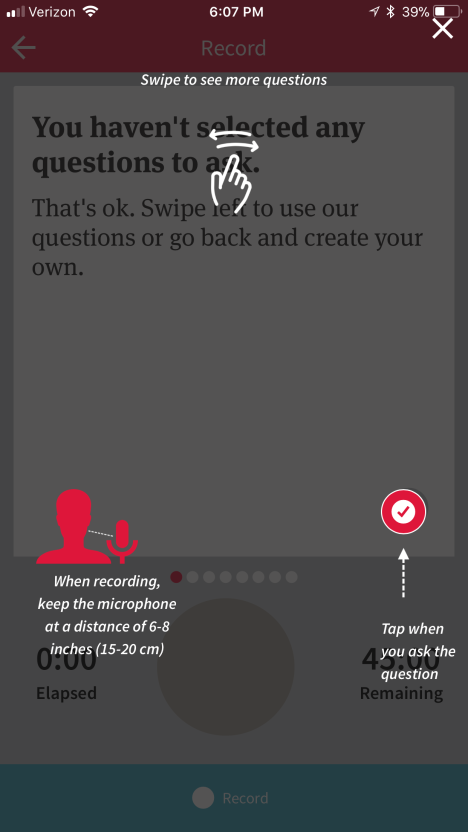
If you’re my age, many of you will have the same regrets as I. One in particular is never asking the questions that haunt me now of my parents and grandparents life experiences before their passing. The image above is of my parents, both who passed away in the 90s taking the answers to many of my questions today with them. Like many as we get older we finally get time to reflect on our life and tend to focus on where we came from. In doing my genealogy over the past 3-4 years I discovered questions about ancestors that may have been answerable if only I would have asked while they were still alive. Dad, where did you propose to Mom? What was it like growing up there? What do you remember about your father, What was your first job? How did you learn to lay brick? And so on. Even though I had missed asking these questions of some of the important people in my life, my thoughts today have switched to thinking about my grandchildren. Maybe I could create media that would hold these types of questions and answers they may be interested in after I’m gone. So, I did what I was familiar with. I took my cell phone and videoed different people in my extended family answering questions like “How did you and your wife meet?”. It worked well for a few, but I did meet resistance. It was not a choice many wanted to make, to sit before a camera and talk. The idea that they could be seen by others seemed to spook them. They were worried by what they looked like.
Then I read about Story Corps. They had several projects somewhat centered around the idea that I was chasing. Except for one big difference. They were doing audio only. And, they did it in an interview format, in a quiet sitting. A lot less pressure! Listening to some of the products from the project made me smile and I was stunned at how easy they received cooperation from the people they were interviewing. Some of the interviewers remarked at how amazing the facts and stories that they learn about from people who meant so much to them.
Story Corps was started by Dan Isay about a dozen years ago. However, the quote below, from his web site (in 2015), does a good job characterizing what I will try to center this post around; ‘Great Thanksgiving Listening Project”.
“In 2015, we asked high school students studying American History and their teachers to work together to create an oral history of the contemporary United States by interviewing an elder or someone else in their lives over the Thanksgiving holiday weekend. Thousands of students from all 50 states embraced the challenge by recording and uploading over 50,500 individual interviews. Together, we preserved thousands of important personal histories as well as helped create a valuable resource for future generations. Nothing close to this scale has ever been achieved before in the history of oral history.”
Story Corps started in just a few big cities in the beginning. They would set up recording booths in buildings where children could bring people who were significant in their lives and interview them while having the audio professionally recorded. These audio files were then uploaded to the National Archives. People across the nation could access them and listen to them. They gave a great snapshot of what our country was like during various decades of the past. Some of Story Corps’ other projects are; September 11th initiative, Memory loss initiative, Military Voices.
Today there is information on their website that guide you through the whole process of planning your questions and recording the interview at home using the StoryCorps App. I downloaded and became familiar with the iOS version of the app and even talked my dear wife in allowing me to interview her. I suspect there would be little if any difference between it and the android app. So, as I go through some of the elements of the app below, I think you could expect a similar experience from the android (DARK) side.
The first screen I saw when opening the app was this ‘Getting Started‘ screen that connected you to information with which to plan your interview out with.
 The app has great tips for making a quality recording that will help guarantee a great experience for young and old participants. I thought I would need to get a good mic for the iPhone (I didn’t want to hold the phone up to the person’s mouth). But I placed it between us and it worked fine. (The app encourages you to hold it up to the speakers mouth – within about 6-8 inches). Although I imagine a mic would make a higher quality recording. The preparing for the interview may be more important than the interview itself as you want to make sure you have a quiet environment where you won’t be interrupted. Next the questions you ask and their order will be important. This you may want to talk over with the person you’re going to interview. Also, if a child or student is doing the interview, you definitely want to let them come up with some of the questions. The app provides examples of questions for many topics/types of interviews. They are presented in various lists depending on who the two are that are involved in the interview.
The app has great tips for making a quality recording that will help guarantee a great experience for young and old participants. I thought I would need to get a good mic for the iPhone (I didn’t want to hold the phone up to the person’s mouth). But I placed it between us and it worked fine. (The app encourages you to hold it up to the speakers mouth – within about 6-8 inches). Although I imagine a mic would make a higher quality recording. The preparing for the interview may be more important than the interview itself as you want to make sure you have a quiet environment where you won’t be interrupted. Next the questions you ask and their order will be important. This you may want to talk over with the person you’re going to interview. Also, if a child or student is doing the interview, you definitely want to let them come up with some of the questions. The app provides examples of questions for many topics/types of interviews. They are presented in various lists depending on who the two are that are involved in the interview.

The app is free, so I hope you will take the opportunity to use it to learn about your past from the people in your family or help a young child in your family learn about theirs. At the end of interview you will be presented with the opportunity to either save your interview to the National Archives or to your phone. Using the iOS version, the files are saved with the app and can be accessed using iTunes. If you’re familiar with the iOS app, ‘Garage Band’ you will be able to edit the file (plus there are many third party apps that allow you to edit sound files). BUT, I would encourage you to upload it to the National Archives. Think about it. If you want it to be around for your grandchildren 40 years from now (when they finally become interested), is more likely to be accessible from your computer or from the National Archives? (While pondering this, think about the floppy. Do you have a drive to read this ‘old’ 10 year old technolgy? If you’re still a little unsure to venture off and try this on your own, here’s a Youtube Video from a college prof (along with one of her students) showing how to use the app.
This app and project are a great opportunity to capture your families history before it’s too late. So, download the app and give it a try. Years from now your children and grandchildren may discover great memories that help define where they came from!
Filed under: Uncategorized |




